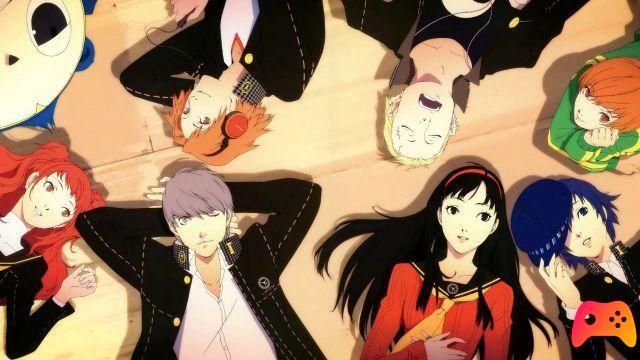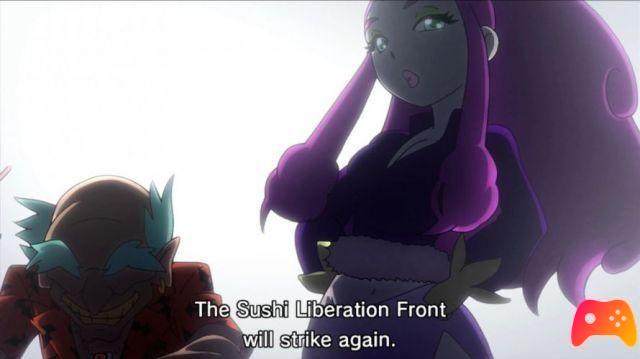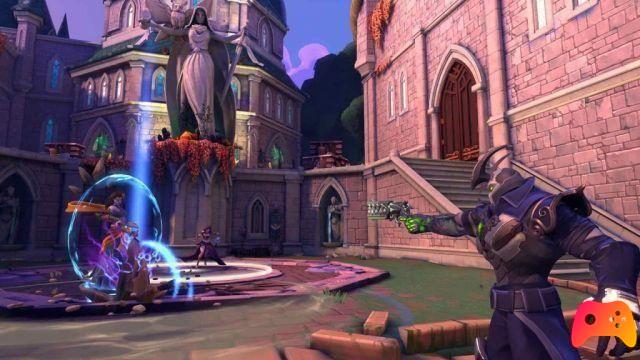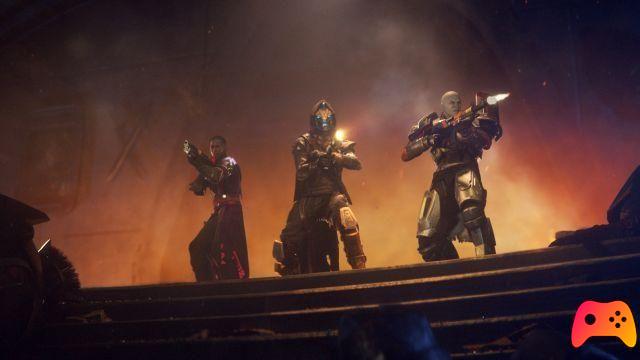
Review for Destiny 2. Game for PC, PlayStation 4 and Xbox One, the video game was released on 06/09/2017 The version for PC came out on 24/10/2017
When the first Destiny was released there was a lot of confusion about how to approach the game: were we facing a new Halo in disguise? Was it just a new cooperative FPS? Was it an MMO? The answer touched on all these questions by providing a cooperative and competitive online gaming experience that is the fruit of over a decade of experience with the previous brand of Bungie. In three years of existence, Destiny has created the most compelling MMOFPS on a permanent online world, filling it with new content that completely changed the original experience, and with memorable occasional events. And it is precisely memory that is at the center of Destiny: through events, competitions, assaults and raids that can only be played as a team with other players (without matchmaking), the game has forced people to communicate and create clans with which to share all these. moments.
And that's how we get to Destiny 2, in this review that he wanted to wait for the first events before expressing a judgment, and that in all probability it will not be completely representative of what the game will become.
Time of war
After official videos, press releases and beta tests first at home and then at Gamescom, the idea of what to expect from the beginning of Destiny 2 was quite clear: the Red Legion of the Cabals, a highly militarized alien race already seen in the first chapter, attacks the last city on Earth to take possession of the Traveler, the spherical entity of an unknown nature that has allowed humanity to progress and made a small number of people immortal and empowered thanks to its Light: the Guardians. The commander of the Red Legion, Ghaul, not considering humanity worthy of the traveler's gifts, through a ship-cage manages to "suffocate" the Light, making the Guardians weak and mortal again. In a chain of events the player predictably manages to recover the powers of the Light, initiating the counter-offensive against the Red Legion. Without going into further details, we just say that the conclusion is nothing more than a new beginning with a cliffhanger for the next expansions and, in a sense, the moment when Destiny 2 begins to show itself for what it really is.
The story takes on a much greater weight, not so much because it starts by upsetting all the certainties and social places to which the players have become accustomed, but rather for the forcing imposed on the players in following it. In the first Destiny there were no particular constraints, and each player could peacefully ignore the plot almost entirely and still access the majority of the contents. In Destiny 2, new planets are reached and new possible mission-to-mission activities are unlocked, without any possibility of joining assaults, raids and other events without first having concluded the whole story (which taking it easy does not take more than 10 hours) - a choice that helps to give greater logical sense to events and missions.
What we appreciated without half measures is the better integration of the lore: in the first Destiny many details of the game world were understandable only thanks to the grimoires, cards that could be unlocked by completing certain actions and which in any case did not contribute in any way to the game, while in the following it is he can discover more by relying on more elaborate dialogues, a greater number of cinematic sequences, and discovering first-hand objects to be examined scattered around the planets.
Goodbye grinding, hello simplicity
Classes, subclasses, equipment and inventory have undergone many apparently insignificant changes which in reality completely change the game experience for those who have played a lot of Destiny. Let's start with the classes, Titan, Hunter and Sorcerer, which return as we know them except for new super moves of the subclasses: in the first Destiny to unlock class skills it was necessary to kill hundreds of enemies, while now it is enough to level up. In addition, the passive skills are now aggregated into two sets of four inseparable from each other, creating real specific builds.
Similar treatment also for the equipment: all perks are already available from the moment the item is collected. It is also important to specify that the basic characteristics of weapons and armor will always be identical: once you have found a weapon, you can always be sure that any additional drop of the same will be almost identical (except for the level of Light, a parameter that defines the of attack in PVE). On the other hand, now every single item of the equipment has a slot for mods that slightly change its parameters or the type of elemental damage, and one to change its coloring with shaders. Both once inserted will not be recoverable, but while the changes can also be purchased in game, the shaders are only available with random drops or by buying them with real currency from the game store. This has led to some controversy in the communities, particularly (and not surprisingly) on Reddit, but we believe that these are baseless exaggerations: first of all the purpose of the shaders is purely aesthetic and does not affect the gameplay in any way, moreover once achieved the level cap the drop frequency increases significantly, and there are really many opportunities to be able to collect new ones.
Let's move on to the inventory: one of the biggest causes of confusion in the first Destiny was the almost infinite amount of exchange items that could be used with one or the other character to purchase certain types of items or equipment, with a weekly rotation in some cases. In the sequel, each planet allows you to collect objects and tokens that can be donated exclusively to a character who resides on the same planet and which, once a certain number is reached, allow you to immediately redeem a legendary engram without useless and continuous back and forth to the social area - where you will have to anyway go to get certain missions and rewards, or manage the deposit, or buy consumable items, but certainly without the same urgency and constancy. There are also no more different currencies: Legendary Shards now allow you to infuse (i.e. bring to a higher level of light) any type of weapon regardless of rarity, and are even accepted by Xur - the merchant who appears only on weekends in random play areas, and that was introduced in Destiny 2 for the first time a few days ago.
Beyond history: what the galaxy offers
As we anticipated, once the story is over Destiny 2 takes on its true form by offering many activities, which in most cases will be integrated directly into the planets, without forcing you to enter a separate session. Let's proceed to list them one by one.
- Adventures: an absolute novelty that offers missions of reduced duration and of little narrative relevance, but nevertheless pleasant. Once the available adventures have ended, it will be possible to reactivate them by talking to the character stationed on the planet.
- Secondary Story Missions: in practice, these are mini-campaigns composed of several missions that deepen the history of the planet where they are set, and which always end with the discovery of a unique weapon. At the moment, these missions cannot be repeated with the same character, and we don't know if and when Bungie will add new ones.
- Patrols: already present in the first Destiny, patrols appear around the planet offering randomly generated but repetitive objectives. They are essentially a filler between missions, or a last resort if you really don't have anything better to do.
- Treasures and hiding places: each planet hides a series of unique, fixed-location golden chests that, unlocked for the first time, offer high and rare rewards. Same goes for the hiding places, secret and underground places at the bottom of which a boss hides. There is also a type of treasure that can only be recovered after purchasing the appropriate maps from Cayde-6, which will offer new ones every week.
- Meditation Missions: once the story is over, Ikora will allow the player to relive the story missions, even offering legendary engrams for completion.
- Public Events: as in the first Destiny, some specific parts of the planet offer events that any passing player can take part in, but luckily there is a sign on the map that identifies the exact location and, above all, a timer that indicates when exactly it starts. Each type of event can also be transformed into heroic mode by performing certain actions, making it even more difficult and rewarding.
- Milestones: essentially the replacement of the no longer existing sizes. Each day the game will offer a series of objectives in different places in the galaxy, after completing which you can get new rewards.
The soul of the PVE
We have listed everything that can be done on a near-daily basis in Destiny, so now let's talk about what represents the essence of cooperation: Assaults, Nightfall, and finally Raid, on which we will spend a separate paragraph. In the first Destiny, Assaults and Raids were essentially an integral part of the story and could be played at your discretion at any time, but in Destiny 2 they are weekly events, so it is Bungie who decides each week which one to make available on the servers - just like the Cala la. Night, remained identical and which, in essence, are Assaults revisited with modifiers that make them much more difficult (and without matchmaking). At the time of publishing the review we had the opportunity to try two Assaults and two Cala la Notte: each mission is particularly long, complex and, in general, with a higher rate of showmanship than any standard activity, and Nightfall has received particularly complex new modifiers, which require a lot of coordination. However, in the absence of friends willing to play, Destiny 2 offers a mode (still in the testing phase) that allows you to join other players who have requested a member.
We come to the Raid, the main reason why we decided to publish this review with the utmost calm: from 13 September a giant ship appeared in the skies of the planet Nessus to the point of being able to literally "swallow" entire celestial bodies, controlled by a Cabal faction not allied to the Red Legion. Like any Raid, this one also offers Guardians the highest level of challenge possible for cooperative play: to be completed without the use of glitches (if any), it requires a full team of 6 players, and alternates moments of pure combat in sections puzzles where collaboration and precision are essential elements for completion. Not only: the game never clearly explains how to complete these puzzles, and finding out how to solve them without the use of a guide requires many attempts and infinite patience and mutual tolerance between 6 different people. These are precisely the things that make Raids the maximum expression of Destiny's nature: reaching the end of a Raid is a real thrill, not only for the very rare and rich rewards offered, but above all for the incredible satisfaction and satisfaction given by ' all six have succeeded in achieving a common goal, often with very different roles.
"I'll kill you": the PVP
If Raids help build bonds, the Crucible (aka PVP game) is what undoes them. Destiny 2 offers two types of Crucible, Quick Play and Competitive, each of which collects different game modes.
In Competitive we find the Survival mode, essentially a team deathmatch with a limited number of lives per player, and the new Detonation mode, where one team has two points at which to detonate a bomb, while the other must prevent it - in practice is Counter Strike.
Quick Match instead offers all those other modes that do not require particular coordination to win. Brawl (team deathmatch or free-for-all), Supremacy (where each kill drops a seal, to be accumulated to win), while Control (the classic zone capture mode) undergoes drastic changes: the three zones to capture they will no longer have to be released before being captured, but they will pass directly from Red to Blue or vice versa, and the number of players in the area will not affect the capture speed in any way.
There are general differences in the game that upset the PVP more than the PVE: in the first Destiny the characters were equipped with modifiers that made the skills more or less fast to reload, while here the only parameters that can vary are the speed of the character, its resistance to damage, or the speed of regeneration, making the timers of the skills (and especially the super) identical for all. The weapons also change: no longer primary, secondary and heavy, but kinetic (i.e. without elemental damage), energetic (with elemental damage) and powerful - the latter are practically like the old heavy ones, but inside they find not only grenade launchers and rocket launchers, but also weapons that were previously considered secondary, such as shotguns, fusion rifles, and sniper rifles (heavy machine guns disappeared for some reason).
There are also further general differences of the Crucible: the maximum number of players goes from 6v6 to 4v4, heavy ammo is now available on a more regular basis but only for the player who collects them (and not whoever is close to the time of unlocking), and the interface always reports which players have the super available.
Finally, let's talk about the Trials of the Nine, active for a couple of days and which replace the much hated Trials of Osiris. The substance is almost identical: it is an occasional event where players are asked to join in 4v4 elimination deatmatches (without matchmaking), and in which it is necessary to win 7 matches in a row to unlock access to an exclusive social area where you get rich rewards. The only real difference is the absence of level perks, which means that the level of Light will not affect the maximum attack or defense capacity. This makes the mode more accessible, but the fact remains that it is in fact the most difficult multiplayer mode offered by Destiny 2.
Family matters: the Clans.
We have said several times how the fulcrum of Destiny (both the first and the second) is to be able to live common experiences with other players: the best way to do this and always have people available to play with is to join a clan, what which in Destiny 2 offers much more than a simple list of in-game acquaintances. Each player belonging to a clan contributes to his level and the benefits he can bring to all its members: every 100.000 cumulative XP the clan levels up and gets a common perk for all members, such as greater chance of obtaining legendary engrams , up to a maximum level of 6. In addition, completing Raids, Assaults, Crucible and Trials of the Nine with at least half of the team belonging to the clan, gives each player a reward.
There are limits: each player can contribute a maximum of 5.000 XP, and the perks available vary from season to season, i.e. every week, when the reset takes place which brings the clan level back to 1.
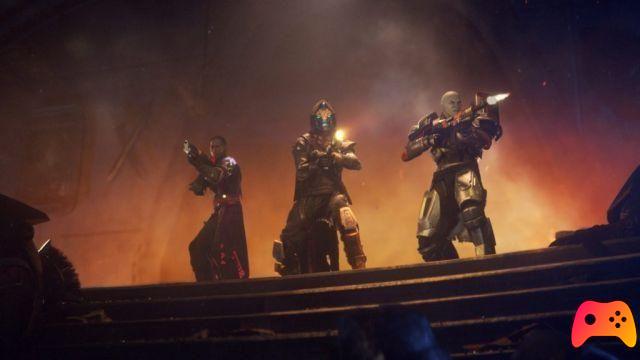
It's not all gold ...
The time we waited to propose a review as complete as possible was very useful not only to be able to take part in the first Raid, the Trials of the Nine, and meet Xur, but also to better understand what the limits of this sequel are. . Destiny 2 offers a better narrated story than the first, however forcing players to deal with it greatly discourages the creation of a new character, as it will not be possible to use it immediately for different activities. Still from a narrative point of view, we would have preferred that the Assaults were not completely excluded from the story: in the first Destiny each Assault represented topical moments in the story, while here we are dealing with end-game activities that, as such, certainly do not offer the same level of emotional involvement. The same goes for the Raids, of which at the moment we only know the Leviathan, but this is already enough to present a narrative paradox: why in the whole story there is no mention of a ship so large that it can engulf and destroy planets? Why is the arrival of such an entity considered secondary, when in our opinion it is even more threatening than the main antagonists of the game?
We also spend some criticisms towards the Crucible and the Clan system: for the first, we cannot understand why Bungie has decided to completely cut the possibility of playing 6vs6 and to select the type of game mode desired, instead of being forced by matchmaking to play what the server proposes. For the Clans, however, the paradox is more evident: we mentioned how each player can contribute in a limited way to the points of the clan: this means, in fact, that the bigger the clan, the more it will progress quickly, effectively disadvantaging anyone who wants to. keep a small circle of acquaintances to play with.
We've been waiting for it for a long time, we've seen and tried it multiple times, we've taken nearly two weeks to review it, and in every moment of writing we would have preferred to dedicate ourselves to the game rather than the review. This already says a lot: Destiny 2 is certainly not the most original game of all time, it offers a story full of cliches, and is not lacking in flaws and questionable features, but it is made special by all the entertainment possibilities it offers to the players. Competition and collaboration come together in a sequel that will give many new memories to all players who will appreciate it. Welcome back, Guardians.
► Destiny 2 is an Action-FPS game developed by Bungie Vicarious Visions and published by Activision for PC, PlayStation 4 and Xbox One, the video game was released on 06/09/2017 The version for PC came out on 24/10/2017
Our latest game news: How to best equip yourself to overcome the new Destiny 2 raid




